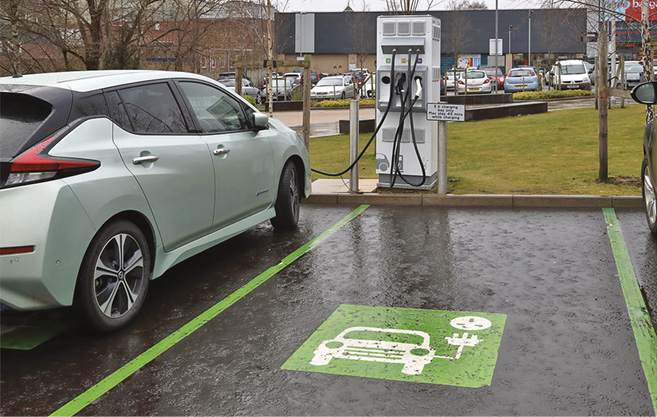FST JOURNAL
Update
Update
IEA sets out concrete steps to net zero
The world has a viable pathway to building a global energy sector with net-zero emissions in 2050, but it is narrow and requires an unprecedented transformation of how energy is produced, transported and used globally, the International Energy Agency said in a special report released in mid-May.
Climate pledges by governments to date – even if fully achieved – would fall well short of what is required to bring global energy-related carbon dioxide (CO2) emissions to net zero by 2050 and give the world an even chance of limiting the global temperature rise to 1.5 °C, according to the report, Net Zero by 2050: a Roadmap for the Global Energy Sector.
The report is a comprehensive study of how to transition to a net zero energy system by 2050 while ensuring stable and affordable energy supplies, providing universal energy access, and enabling robust economic growth. The IEA says that it sets out a “cost-effective and economically productive pathway”, resulting in a clean, dynamic and resilient energy economy dominated by renewables like solar and wind instead of fossil fuels. The report also examines key uncertainties, such as the roles of bioenergy, carbon capture and behavioural changes in reaching net zero.
Building on the IEA’s energy modelling tools and expertise, the Roadmap sets out more than 400 milestones to guide the global journey to net zero by 2050. These include no further investment in new fossil fuel supply projects, and no further final investment decisions for new unabated coal plants. By 2035, there are no sales of new internal combustion engine passenger cars, and by 2040, the global electricity sector has already reached net-zero emissions.
www.iea.org/reports/net-zero-by-2050
‘Triple investment’ to tackle global crises
Annual investments in nature-based solutions will have to triple by 2030 and increase four-fold by 2050 from the current investment of US$ 133 billion (using 2020 as base year) in order to successfully tackle the interlinked climate, biodiversity, and land degradation crises, according to the UN State of Finance for Nature report.
That will mean a total investment in nature of US$ 8.1 trillion by 2050 – with annual investment of US$ 536 billion by that date – is required.
The report – produced by the UN Environment Programme (UNEP), the World Economic Forum (WEF) and the Economics of Land Degradation (ELD) Initiative – urges governments, financial institutions and businesses to overcome this investment gap by placing nature at the heart of economic decision-making in the future.
It stresses the need to rapidly accelerate capital flows to nature-based solutions by making nature central to public- and private-sector decision-making related to societal challenges, including the climate and biodiversity crises.
Structural transformations are needed to close the finance gap between now and 2050, by building back more sustainably in the wake of the Covid-19 pandemic, but also by repurposing harmful agricultural and fossil fuel subsidies and creating other economic and regulatory incentives.
Investing in nature supports human, animal and planetary health, improves quality of life and creates jobs, says the report. However, nature currently only accounts for 2.5% of projected economic stimulus spending in the wake of Covid-19. Private capital will also have to be scaled up dramatically to close the investment gap. Developing and scaling up revenue flows from ecosystem services and using blended finance models as a means to crowd in private capital are among the suite of solutions needed to make this happen, which also requires risk-sharing from private sector actors.
‘Huge challenge’ for electric vehicles
The Public Accounts Committee says that while Government has set ambitious targets to phase out new petrol and diesel cars by 2030 and for all new cars to be zero-emission from 2035, with just 11% of new car registrations for ultra-low emission cars in 2020 it will be a “huge challenge” to get this to 100% in the next 14 years.
Achieving this ambition will require convincing consumers of the affordability and practicality of zero-emission cars, with up-front prices still too high for many in comparison to petrol or diesel equivalents, and addressing the current very uneven take-up across the UK.
 The number of charging points is increasing, but many more will be needed [WALTER BAXTER (CC-BY-SA/2.0)]
The number of charging points is increasing, but many more will be needed [WALTER BAXTER (CC-BY-SA/2.0)]
The number of charging points is increasing rapidly, but many more will be required within a very short period of time to support the envisaged growth in electric cars in the UK, and the PAC is not convinced the Government is on track with this crucial infrastructure.
The Committee says the Department for Transport and the Department for Business, Energy and Industrial Strategy (BEIS) will need to do much more to consider the practical application of this large societal change, and put consumers at the heart of it.
The Departments will need to be on top of the other consequences arising from this transition, says the report, including the impact on the skills and capabilities required to support the changeover in the UK vehicle fleet; the environmental and social implications of the switch-over both in the UK and across global supply chains; the impact on our future power needs; and the impact on the government tax-take due to the loss of fuel duties.
https://publications.parliament.uk/pa/cm5802/cmselect/cmpubacc/186/18602.htm
